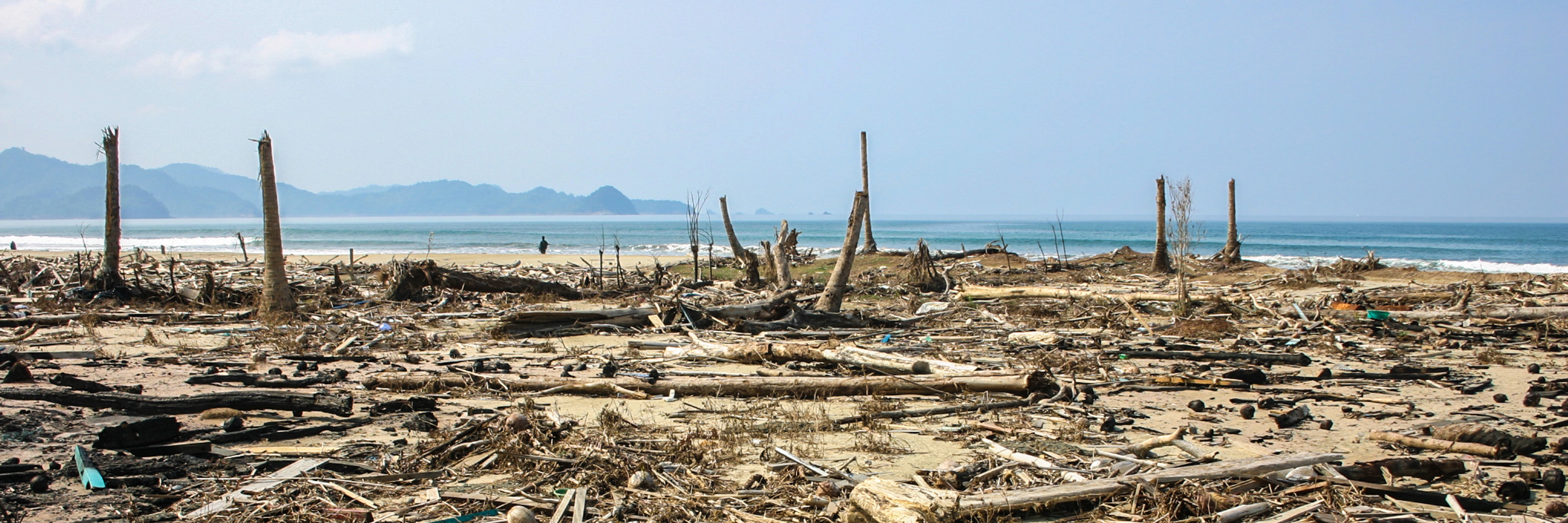Disaster, gender and climate change
Climate change is already increasing the intensity and magnitude of natural hazards such as floods, storms, droughts and other severe weather events. These impacts are expected to worsen in the future. Sea levels may rise, low-lying delta areas might be flooded and salt-water intrusion may increase. Although natural disasters happen all over the world, they have a much greater impact on developing countries than on industrialised ones. Economies are less powerful and therefore less able to prevent disasters or to cope with the losses.
Natural disasters are especially likely to affect parts of the population that lack the ability to prepare for the impacts of disaster because of economic limitations or cultural factors. This holds true for both industrialized and developing countries – in industrialised countries, too, it is generally the poor parts of society that are most affected by natural disasters. The effects of extreme weather events such as Hurricane Katrina, which hit New Orleans and the Gulf Coast of the United States in 2005, highlight this.
Gender dimensions
It is widely understood that women and men are affected differently by disasters in a number of respects, depending on cultural and socio-economic contexts.
Men and women are clearly both affected by disasters, but biological, social, cultural and economic differences mean that they are affected differently. The gendered impacts of disasters affect emergency response, reconstruction and recovery efforts after disaster events, and are also relevant to the prevention and mitigation of disasters.
Natural disasters directly impact women in their roles as producers and providers of food, water and fuel, income earners, household managers and care givers. Food security and family well-being are threatened when the resource base upon which women rely to carry out their roles and to obtain supplementary incomes is undermined. Pregnant and lactating women are particularly at risk due to their limited mobility and heightened needs for water and food. Disasters can also affect women’s social role by reducing their autonomy and decision-making power. Increased care-giving responsibilities may double or even triple women's workloads. Men, on the other hand, have a higher risk of morbidity and mortality during natural disasters because of their social role as protector and defender of family and household, while women are more at risk due to cultural restrictions. Due to their lack of financial resources, women – who make up the majority of worlds poor – are can find themselves in particularly dire circumstances during and after disasters. When disasters damage or destroy the local environment, women – especially in the Global South – can lose the materials, resources and spaces they depend on to live and work.
Although women’s home-based businesses are often destroyed, they tend to be less supported than men in post-disaster phases. They have less access to post-disaster reconstruction initiatives such as jobs, credit programs and facilities. Several studies have pointed out that women’s suffering after disasters has more long-term consequences than men’s.
Post-disaster migration can increase women’s burden. Migration may lead to demographic changes in a population and a higher share of female-headed households with limited provision of adult labour and more responsibilities for caring for family, participating in the community and generating income. Women may also be less mobile, and thus less able to participate in migration, due to their caring responsibilities.
Forecasting information networks or early warning systems oriented towards males often don’t take into account women’s opportunities and channels to access information. Accordingly, due to their limited access to information, women are less able to minimize risks.
Women are key to the prevention of disasters: their local knowledge is useful during and after disasters, and they have survival and coping skills in emergencies, including food preservation and physical and mental health care skills.
Natural disasters sometimes provide women with unique opportunities to challenge and change their gendered status in society. As a result of their disaster response efforts, women might be able to develop new skills and take an active role in what are traditionally considered 'male' tasks. This can have the effect of changing society’s conceptions of women's capabilities.
Response
There is a significant amount of knowledge about the gendered impacts of disaster management and risk reduction. To ensure that gender considerations are mainstreamed into disaster preparation and response, it should be mandatory for gender and disaster experts to be involved in the development of national and local adaptation plans.
New ways of thinking about disaster risk are needed which support democratic, environmentally and socially sustainable, and disaster-resilient communities. A greater reflection of the differences between women’s and men’s everyday realities will promote an integrated and holistic approach and enhance community involvement, mitigation, disaster prevention and social equality.
There are valuable skills and lessons to be learnt from the varied women's initiatives that exist – from local level adaptation and coping strategies to political advocacy, policy intervention and political organizing. These concerns must be integrated into global women’s movements.
Women who live in different high-risk environmental, political, cultural, and economic contexts, and therefore have differing access to resources like energy and water, should be regularly consulted about climate policy and disaster response. Specific attention should be paid to the inclusion of non-indigenous and indigenous women.
Gender-sensitive training modules targeting a range of audiences and focusing on risk communication, mitigation, socially just reconstruction policies and others related issues could help to raise awareness among planners, politicians and practitioners.

